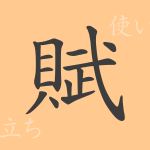In Japanese culture, kanji (かんじ) are not just characters; they are symbols with a long history and deep meanings. Among them, the kanji “譜 (ふ)” is used in various fields, from music to history. This article explores the world of the 常用漢字 (じょうようかんじ) “譜 (ふ),” from its origins and meanings to its usage and the idiomatic phrases used in everyday life.
The Origin of 譜 (ふ)
The kanji “譜 (ふ)” is a character that originated from ancient China, and its formation is derived from records written in ancient documents and musical scores. Originally used as a symbol to record musical melodies and rhythms, it is composed of “示 (し)” which means a prayer or indication to the gods, and “普 (ふ)” which means to spread or popularize. These elements combined to create the character “譜 (ふ),” which signifies the broad dissemination and indication of music or information.
The Meaning and Usage of 譜 (ふ)
“譜 (ふ)” primarily means “musical score,” but it can also refer to records that indicate genealogy or order, such as family trees or genealogical charts. Generally, it refers to any document that systematically records something. It is often used in the form of “〜譜 (ふ),” and its meaning changes depending on the specific context.
The Reading, Stroke Count, and Radical of 譜 (ふ)
The kanji “譜 (ふ)” has distinctive readings and components.
- Reading: In 音読み (おんよみ), it is read as “フ (ふ).” There is no 訓読み (くんよみ).
- Stroke Count: It has a total of 19 strokes.
- Radical: The radical is “言 (ことばへん),” meaning “words.”
Idiomatic Phrases and Proverbs Using 譜 (ふ)
Here are some idiomatic phrases and proverbs that include “譜 (ふ)”:
- 楽譜 (がくふ): A document with instructions for performing music.
- 家系図 (かけいず): A chart indicating family lineage, also known as 家譜 (かふ).
- 系譜学 (けいふがく): The study of genealogy and family lines.
- 色譜 (しきふ): An arrangement of colors in a systematic order.
Summary of 譜 (ふ)
The kanji “譜 (ふ)” is a versatile character used in a wide range of fields, from music to genealogical charts. Its complex origins and usage play a significant role in Japanese culture and are deeply rooted in our daily lives. Through this article, we hope to deepen your understanding of “譜 (ふ)” and rediscover the richness of the Japanese language.

























